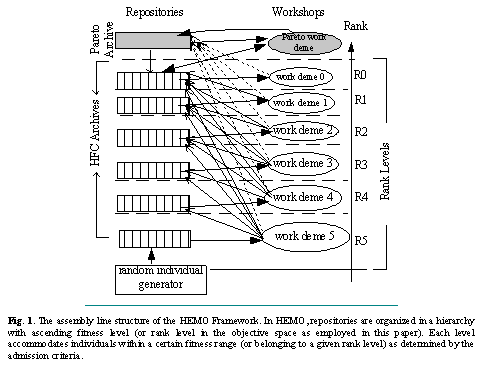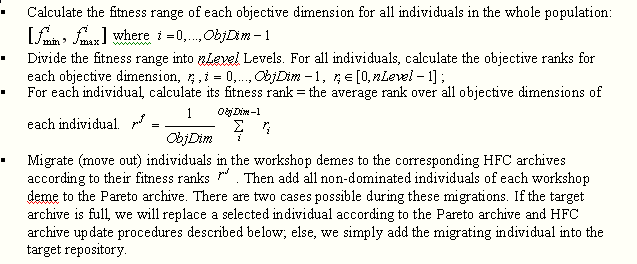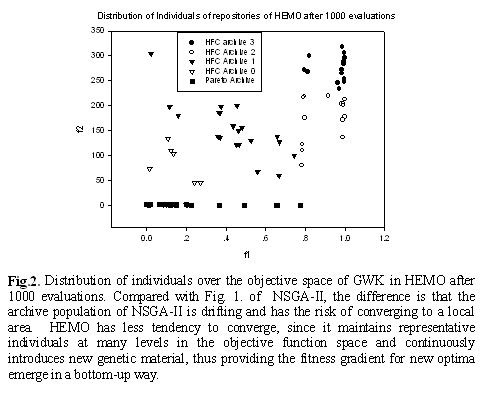|
Overview
The
major difficulty of applying HFC principle to evolutionary
multi-objective optimization is which criteria should be used to segment
the individuals to ensure fair competition. Since in EMO, there exist
multiple objective criteria, we can't use any single objective function
as the standard to divide the fitness levels. One approach is to use
aggregate EMO approach. We combine the multiple objective values into a
single fitness and then the standard HFC algorithms can be used.
However, in HEMO, a more clever scheme is used to enable HFC be appled
to some modern EMO algorithms like PESA, NSGA-II, and SPEA. In [1] we
combine HFC technique with PESA to achieve robust and sustainable EMO
search.
Approach
Essentially, HEMO is an
extension of PESA enhanced with the continuing search capability of HFC.
In addition to the Pareto archive and the Pareto workshop population, a
succession of archives for maintaining individuals of different fitness
levels is added to allow mixing of lower- and intermediate-level
building blocks. A random individual generator is located at the bottom
to feed raw genetic material into this building block mixing machine
continually. The structure of HEMO is illustrated in Fig. 1:

The key idea of applying HFC to EMO is that using average
rank of an individual over all objective criteria for segmenting the
population into different fitness levels:

How
HEMO compares to NSGA-II with controlled elitism
Comparing
HEMO with NSGA-II (and other EMO algorithms), the major difference is
that NSGA-II search (even with controlled elitism) (Fig 1) is a
convergent process. Most of the individuals converge into the possible
local pareto front and becomes increasing difficult to jump out. While
HEMO search (Fig 2) is a sustainable process without getting trapped
anywhere.


References:
[1]
Jianjun
Hu, Kisung Seo, Zhun Fan, Ronald C. Rosenberg, Erik D. Goodman.
HEMO: A Sustainable Multi-Objective Evolutionary Optimization Framework.
(To appear in Genetic and Evolutionary Computation Conference 2003,
Chicago) |